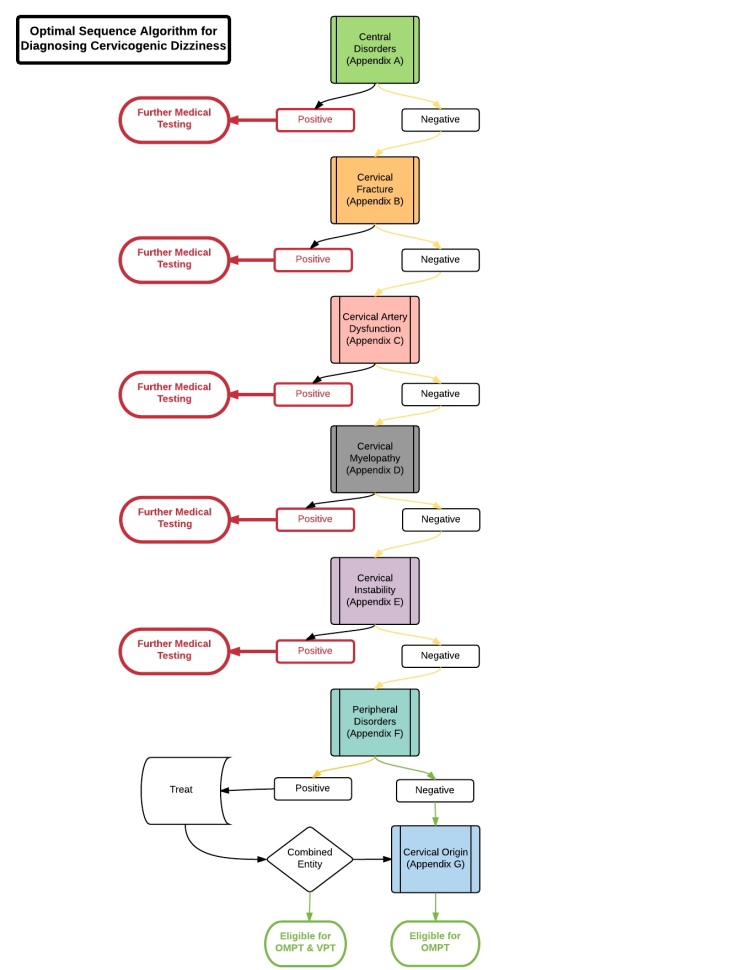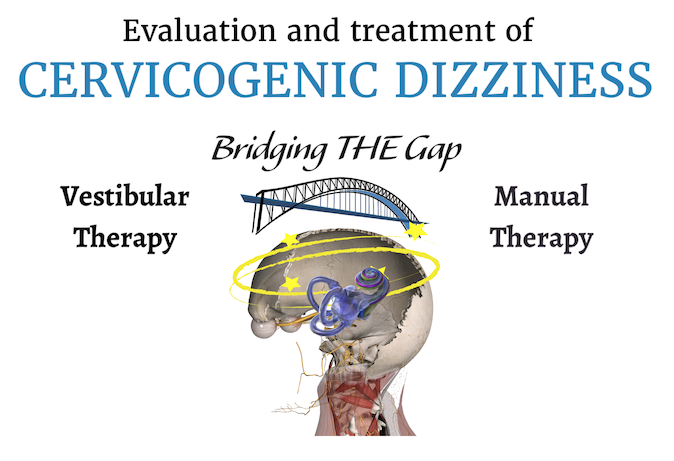The Dix-Hallpike Manuever is considered the gold standard for the diagnosis of posterior semicircular canal Benign Paroxysmal Positional Vertigo (BPPV). It has decent statistics in its utility in just itself having a sensitivity of 79%, specificity of 75%, LR+ = 3.17 and LR- = 0.28 (Haulker et al 2008) and lends itself very convenient for smooth transition into treatment via the Epley Manuever.
In addition to a thorough patient history, this patient examination piece is crucial in clinical practice guidelines by Bhattacharyya N et al 2008 to assist clinicians in the grey zone of dizziness symptoms. Agreeing with this work and consensus among clinicians, the practitioner should absolutely differentiatebetween this benign condition with other, potentially dangerous, reasons for imbalance, vertigo and dizziness.
One of the biggest take-aways I get from our Cervicogenic Dizziness Diagnosis & Treatment weekend course is most “vestibular” clinicians get an “a-ha moment” while learning the Optimal Sequence Algorithm, particularly Appendix C (Cervical Artery Dysfunction) I say “a-ha” lightly; meaning not to fray upon their current clinical decision making, but the reason WHY we teach ruling out Cervical Artery Dysfunction prior to performing peripheral testing and cervical ROM testing.
We teach a very simple, but effective means to rule out vascular insufficiency (clinical exam) & conditions of spontaneous origin (most likely what will walk in your door) based off of concepts of epidemiology, entire body hemodynamic principles, and triggers to possible cause of a dissection.

This is a huge interest of Harrison’s considering the changes in thought-processes and clinical-decision-making of relationship between manual therapy and stroke over the past decade. Many myths were put to rest in Harrison’s training early in his career that ballooned into more understanding by his Fellowship Mentor, co-author of the Optimal Sequence Algorithm for and ICC partner, Dr. Brent Harper. Considering Danielle and Harrison come from “different” backgrounds (vestibular and manual training, respectively); we found a missing link in this understanding and present it very clearly in our course.
Openly speaking, causing a stroke from manual therapy is MUCH more prevalent in discussions on this topic compared to performing vestibular rehabilitation of canalith repositioning testing and treating — even though a spontaneous dissection in process could turn dangerous with even these procedures. Hence why we our course is called, “Bridging the Gap between Manual and Vestibular Therapies”.

Watch the video attached to this blog of a clip from a short lecture of Harrison speaking at our course describing why it is pertinent to consider vascular origin, specifically spontaneous dissection, with symptoms of dizziness/imbalance/vertigo prior to performing Dix-Hallpike Manuever in patients suspected of BPPV. Learn this approach to be the most confident in your clinical examination of patients presenting with dizziness, even if your plan is to perform a joint mobilization/manipulation, massage or canalith testing.
You can learn more about the screening and treatment process of Cervicogenic Dizzinesss through Integrative Clinical Concepts, where the authors (husband–a manual therapist a wife—a vestibular specialist), teach a very unique course combining both the theory and practice of vestibular and manual principles in their 2-day course. Pertinent to this blog post, the 2nd day includes the “Physio Blend”, a multi-faceted physiotherapist approach to the management of Cervicogenic Dizziness, which includes treatments of the articular and non-articular system of manual therapy and the most updated sensorimotor exercise regimen.
If you would like to host a course for your staff (either a vestibular, neuro, sports or ortho clinic), please do not hesitate to contact me at harrisonvaughanpt@gmail.com for more information.
Authors
Harrison N. Vaughan, PT, DPT, OCS, Dip. Osteopracic, FAAOMPT
Instructor: Cervicogenic Dizziness for Integrative Clinical Concepts
Danielle N. Vaughan, PT, DPT, Vestibular Specialist
Instructor: Cervicogenic Dizziness for Integrative Clinical Concepts
Want to learn in person? Attend a #manualtherapyparty! Check out our course calendar below!
Learn more online!
Want an approach that enhances your existing evaluation and treatment? No commercial model gives you THE answer. You need an approach that blends the modern with the old school. Live cases, webinars, lectures, Q&A, hundreds of techniques and more! Check out Modern Manual Therapy!
Keeping it Eclectic...
















Post a Comment
Post a Comment